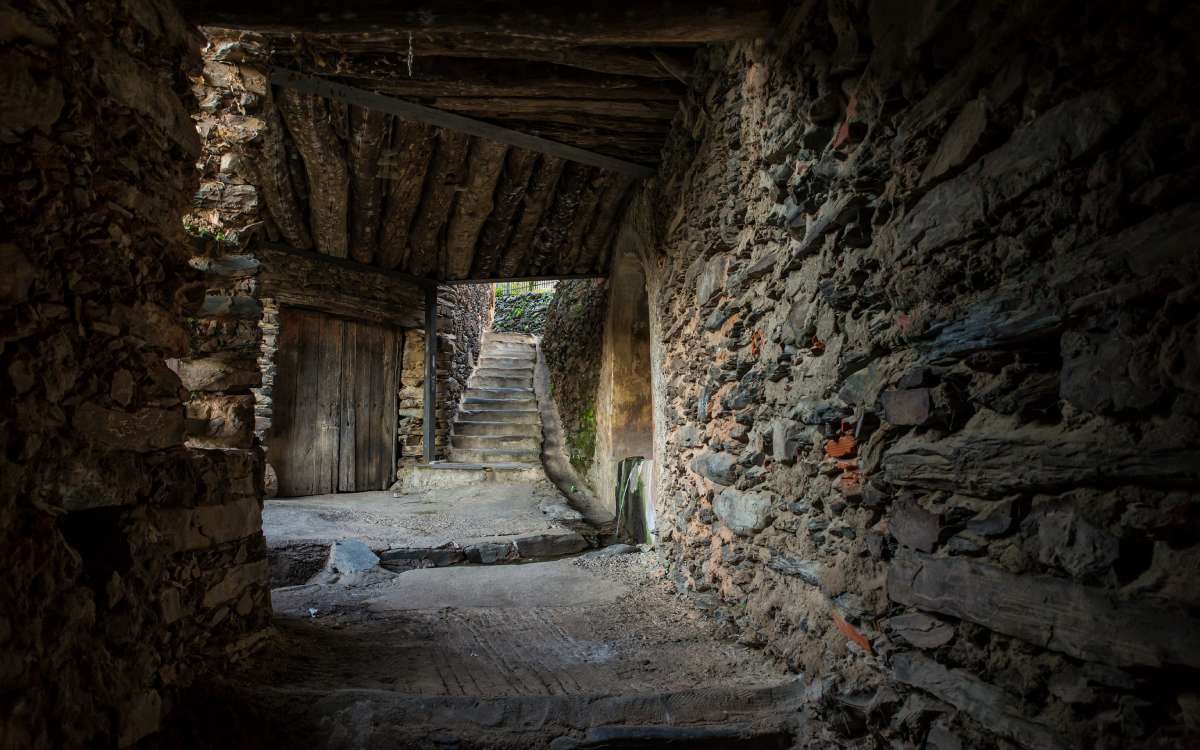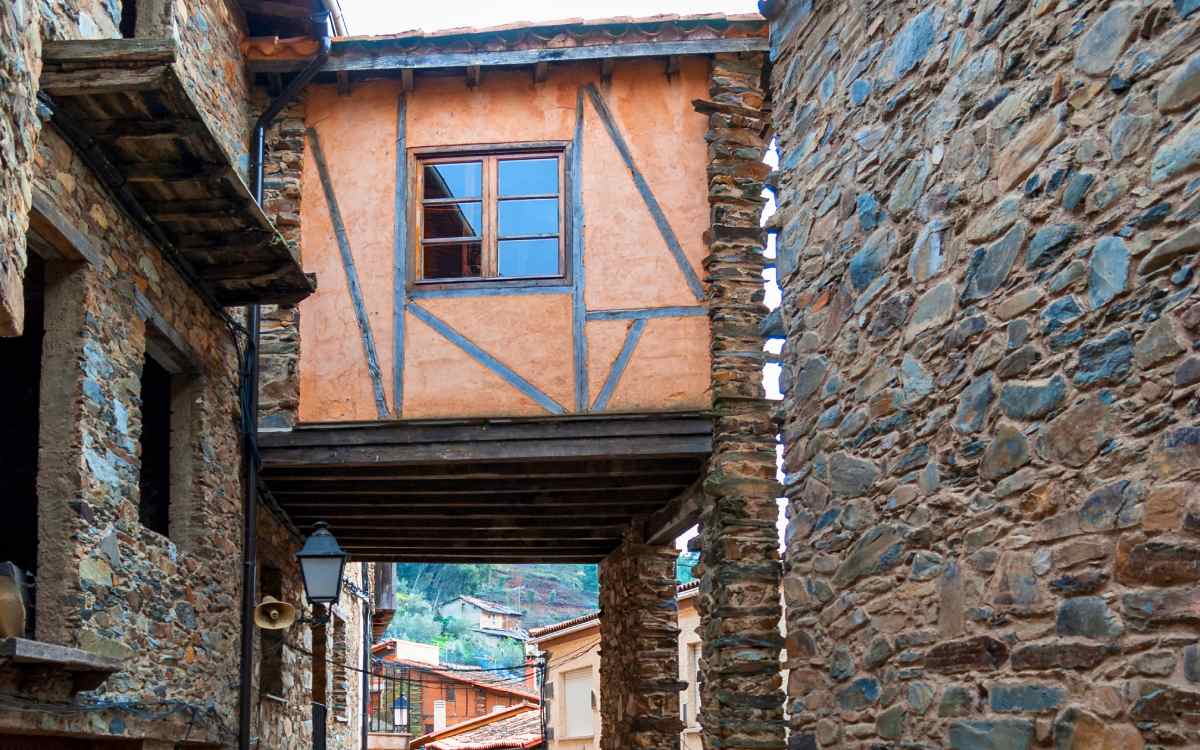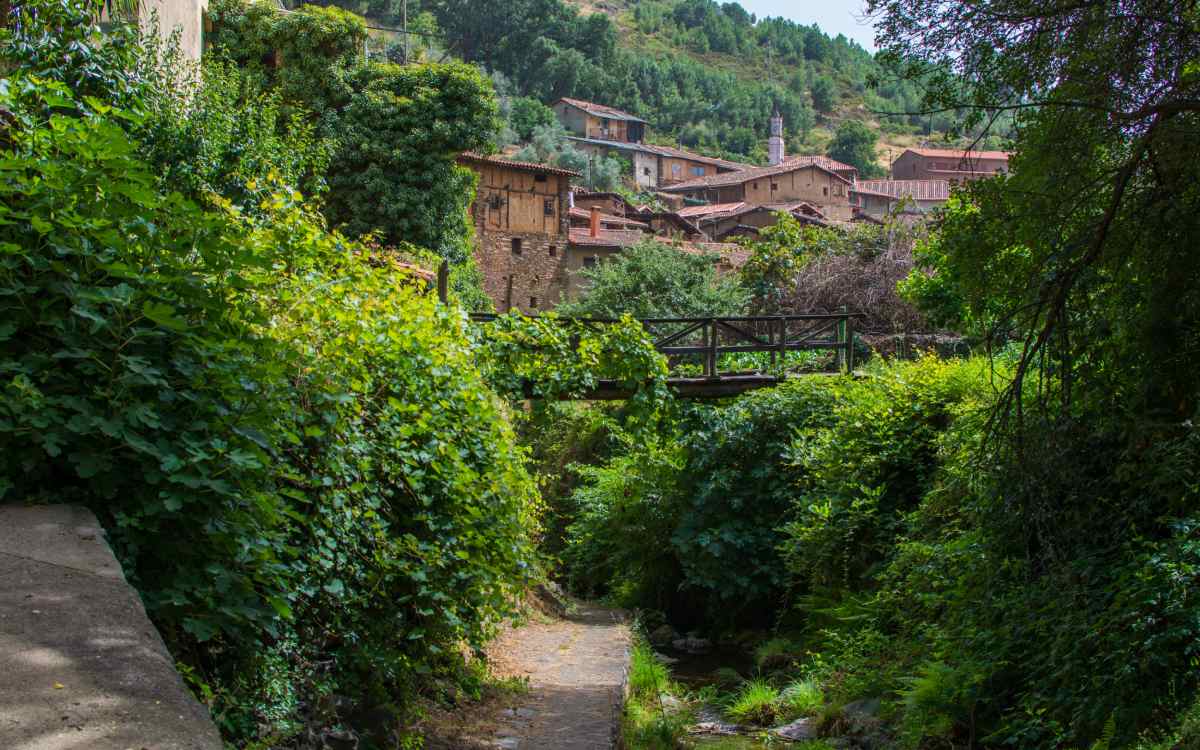
Vernacular architecture is the best expression of the most primal need: adapting to the land and to diferent lifestyles. This architecture has been forgotten due to the passing of time and our new needs. In some places, it has even disappeared.
But Spain hides tiny localities that have avoided losing that part of their essence. Cáceres’ Sierra de Gata is one of those privileged places where it is still possible to walk around a village turned into a true ethnographic museum.

Robledillo de Gata. | Shutterstock
This idyllic spot where urban streets merge with the beautiful landscape is in the heart of a valley. Robledillo de Gata is one of those wonders that invites us to travel back in time and dive into the most authentic traditions. Its narrow streets and homes conform one of the most beautiful villages in Extremadura.
This village has embraced the land’s ascending shape, the same you will find in the terraces it is surrounded by. It rises on the bank of the Árrago River, creating a funnel shape with its streets. Sinuous, steep streets that differ from one another. Sometimes they disappear, swallowed by the tiny houses. Robledillo de Gata is a chain of landscapes, tunnels, and cantilevers.

Passages in Robledillo de Gata. | Shutterstock
The reasons behind this particular architecture are merely practical. One of them lies in the characteristics of the land and its slopes, which forced people to build their homes at different heights. The other one is linked to the traditional eaves and balconies of the area that protrude beyond the façades, caressing the neighbouring buildings and even joining them.
As a result, these streets barely get any ray of sunlight in the inclement summers, and their houses are safe from the coldest winters. They keep secrets and hold legends, such as the ones about bandits, which belong to Sierra de Gata’s darkest history. But now they are brighter than ever, and walking through Robledillo de Gata is a very nurturing experience.

Streets of Robledillo de Gata. | Shutterstock
Robledillo de Gata’s ‘serrano’ essence can be discovered in many other details, in each one of its houses. Their adobe or rough slate walls, their framing, their wood galleries and their Arab roof tiles. All of them are dressed in shades that perfectly integrate these buildings into one of the most beautiful landscapes in the province of Cáceres.
The house floor plans reflect how locals lived until recently. The ground floor was for the animals and the cellar. The first floor was the always-modest home, displayed around the kitchen. Meanwhile, the second floor was the attic. Sometimes, it was also used for drying meat, an essential part of the home owners’ livelihood.

A waterfall in Robledillo de Gata. | Shutterstock
The silence in Robledillo de Gata is disrupted by the sound of the water. The Árrago River jumps from the tallest spot in the valley, creating natural pools of icy waters that are perfect for the summer. It turns into small cascades in the town centre, refreshing the area. Some bridges allow visitors to dive into the fascinating surroundings.
If there is a building that stands out in this complex, it’s its old mill, a middle-age oil mill or almazara that was still in use until less than 50 years ago. It serves as a reminder of the local olive variety, the manzanilla cacereña, used to prepare an excellent olive oil. The mill wheels don’t rotate anymore, and the machinery now belongs to the Museo del Aceite (‘Oil Museum’) this building turned into a few years ago.

Robledillo de Gata. | Shutterstock
The Iglesia de la Asunción was erected in the town centre of Robledillo de Gata in the 16th century, on top of an old house of the dukes of Alba. Its appearance is as modest as the other buildings’, and it is home to two tiny gems: a sacristy of Mudéjar cover and a gorgeous image of a lying Jesus.
Although the narrow streets of Robledillo de Gata invite us to forget everything else and enjoy every detail as much as possible, you should take your time to explore the beautiful Sierra de Gata. Many paths from this village will take you to the neighbouring village of Las Hurdes or to unique spaces such as the waterfall of Chorritero de Ovejuela, the dolmen of Robledillo and the remains of the old hermitage of Santo Tomé. They all cross oceans of oaks, pines and chestnuts in an idyllic environment.
You can also read this article in Spanish here.
Follow us on Facebook!